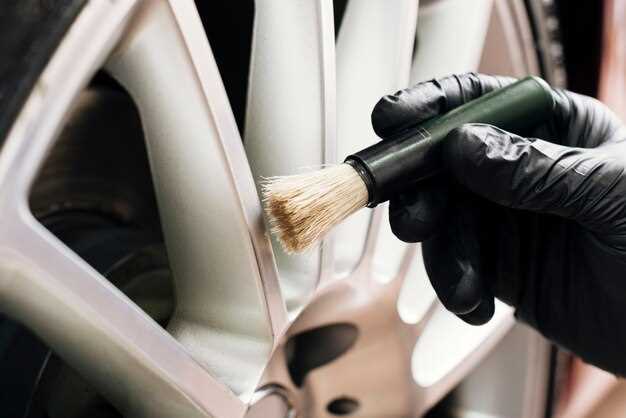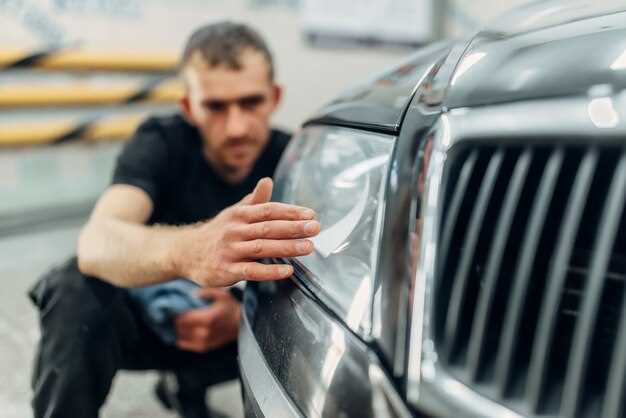
Owning a car often comes with the inevitable wear and tear of everyday use. Among the most common issues vehicle owners face are minor scratches that can dull the appearance of your vehicle’s exterior. Fortunately, addressing these imperfections does not require professional help or expensive repairs. With a little time and the right materials, you can restore your car’s paint to its former glory.
One effective method for fixing those annoying scratches is the touch-up technique. This approach involves matching your car’s paint color and applying it directly to the scratched area. You can find touch-up paint kits specifically designed for your vehicle model, ensuring a seamless blend with the existing paint. The right tools and a careful application can make a significant difference in the aesthetic appeal of your car.
While small scratches may seem insignificant, they can expose the metal underneath to rust and damage over time. By promptly addressing these issues, you not only enhance your vehicle’s appearance but also protect its value. In the following sections, we will explore simple yet effective tips to help you repair minor scratches and maintain the pristine look of your car.
Choose the Right Paint for Your Car
Selecting the correct paint for your car is essential for effective scratch repair. Start by identifying the exact color code of your vehicle, which is usually located in the driver’s side door jamb or under the hood. This code will guide you in finding a matching touch-up paint that blends seamlessly with your car’s original finish.
Consider the type of paint required for the repair. Automobiles often use different types of paint, such as acrylic enamel, urethane, or water-based paints. Urethane is a popular choice for its durability and resistance to fading, making it ideal for touch-up repairs. Acrylic enamel, on the other hand, offers a glossy finish and is easier to apply for minor scratches.
When purchasing touch-up paint, ensure it is specifically designed for automotive use. Home improvement paints or general-purpose sprays may not adhere properly or match the finish. Many manufacturers provide touch-up kits that include paint pens, brushes, or spray cans for convenience.
Finally, consider using a clear coat after applying the paint. A clear coat provides an additional layer of protection and helps achieve a glossy finish, ensuring that your repair is not only effective but also looks professional.
Step-by-Step Guide to Applying Touch-Up Paint

Applying touch-up paint is an effective way to repair minor scratches on your car. Follow these steps for a professional finish.
Step 1: Gather Your Materials
You’ll need touch-up paint that matches your car’s color, a clean cloth, paintbrush or applicator, clear coat, and rubbing alcohol. Ensure you have everything ready before starting the repair.
Step 2: Clean the Area
Use a clean cloth and rubbing alcohol to thoroughly clean the scratched area. This removes dirt, oil, and wax, ensuring proper adhesion of the touch-up paint.
Step 3: Shake the Touch-Up Paint
Before opening the touch-up paint, shake the bottle well to mix the contents. This ensures an even consistency and color match when applied.
Step 4: Apply the Touch-Up Paint
Using a fine brush or applicator, carefully apply the touch-up paint onto the scratch. Start from the center of the scratch and work your way outward. Apply in thin layers, allowing each coat to dry before adding another. This helps prevent drips and creates a smooth finish.
Step 5: Let It Dry
Allow the touch-up paint to fully dry as per the manufacturer’s instructions. This may take anywhere from a few hours to a full day, depending on the environment and paint type.
Step 6: Apply Clear Coat
Once the touch-up paint is dry, apply a clear coat over the area. This protects the new paint and gives it a glossy finish. Use a clean brush and apply it in a thin, even layer.
Step 7: Final Touches
After the clear coat has dried, inspect the repair. If necessary, lightly sand the area with fine-grit sandpaper to blend it with the surrounding paint, followed by buffing with a soft cloth to restore shine.
Following these steps will help you effectively repair minor scratches on your car using touch-up paint, making it look as good as new.
Best Practices for Preventing Future Scratches

To maintain the integrity of your car’s exterior, implementing best practices for preventing scratches is crucial. Start by regularly applying a quality wax or sealant to create a protective barrier over the paint. This not only enhances the shine but also adds an extra layer of defense against minor abrasions and environmental elements.
Another effective strategy is to park in garage spaces or shaded areas whenever possible. This minimizes exposure to sunlight, which can cause paint to fade and become more vulnerable to scratches. Using car covers when parking outdoors is also an excellent way to shield your vehicle from debris, dust, and potential damage.
Regularly cleaning your car with soft materials is essential to avoid scratching the paint surface. Opt for microfiber cloths for drying and polishing and ensure that any dirt or grime is removed before attempting to clean. Additionally, consider employing a touch-up paint kit for addressing any micro-scratches promptly, which can prevent them from developing into larger issues over time.
Be mindful of elements that can cause scratches, such as tree branches, shopping carts, and even loose gravel on the road. Keeping a safe distance while driving and being cautious in parking lots can significantly reduce the likelihood of scratches.
Lastly, routine inspections of your vehicle’s exterior will help identify any areas that need immediate attention or touch-ups. By addressing minor repairs proactively, you can maintain the appearance of your car and prevent future paint issues from arising.



